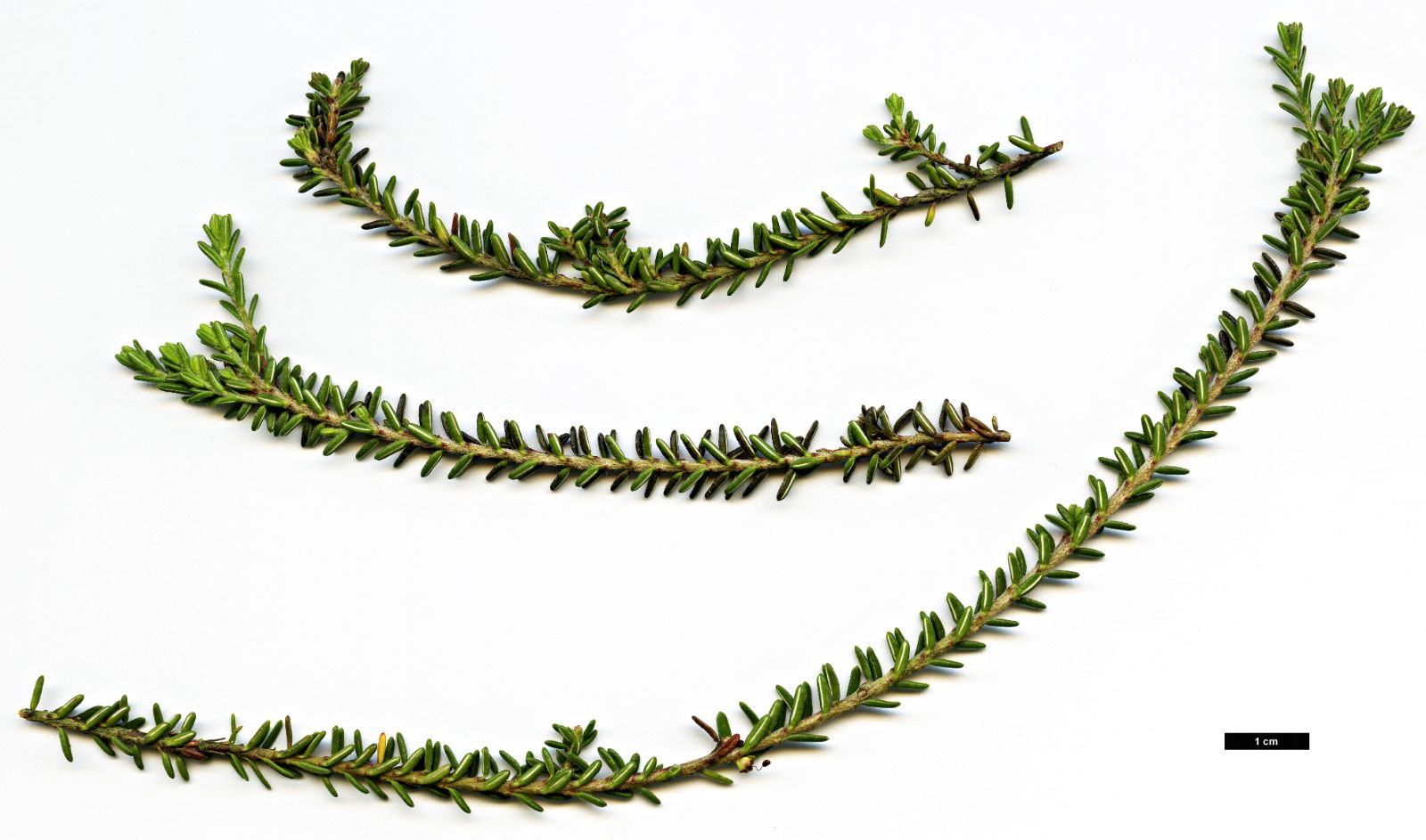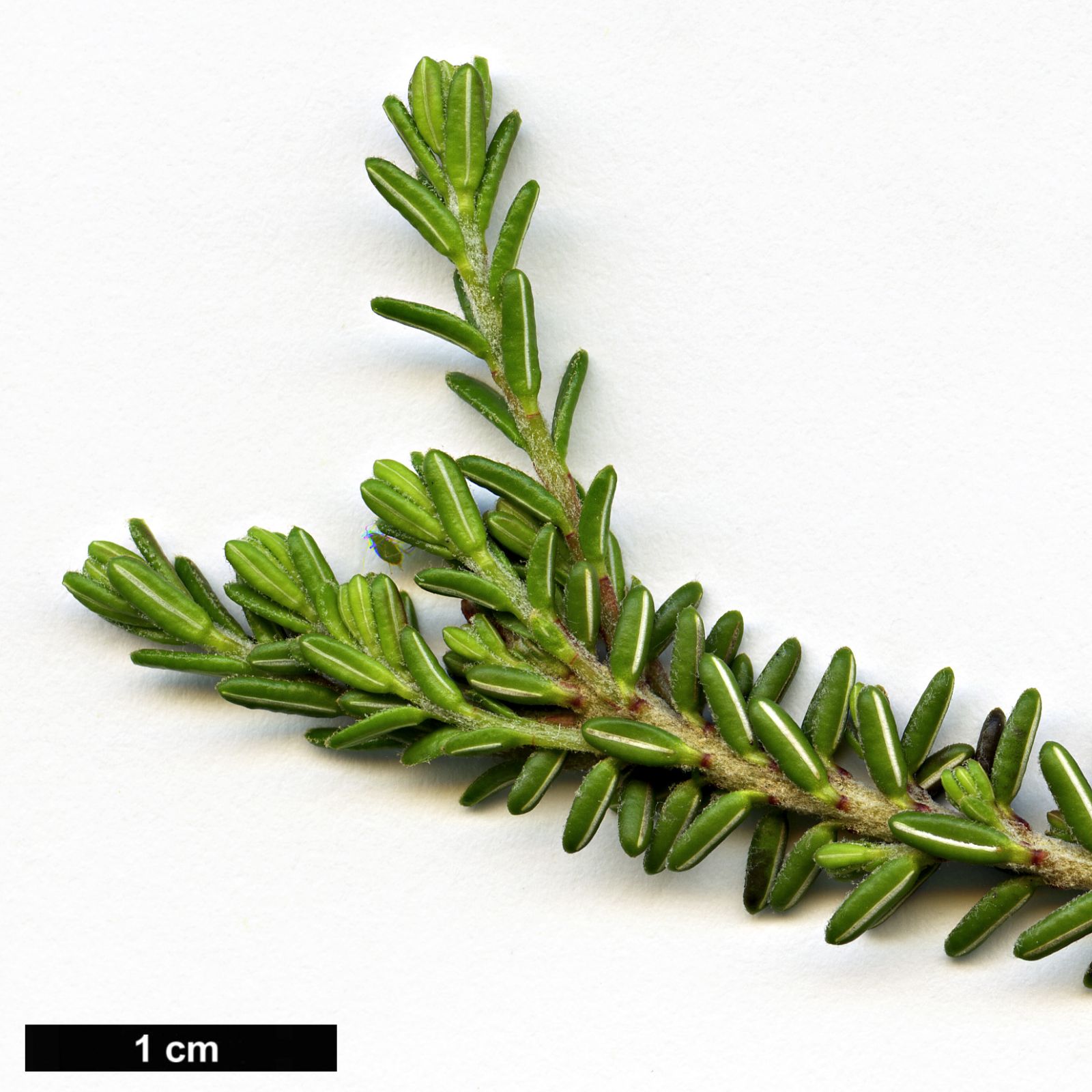Empetrum rubrum
Credits
Article from Bean's Trees and Shrubs Hardy in the British Isles
Recommended citation
'Empetrum rubrum' from the website Trees and Shrubs Online (treesandshrubsonline.
Genus
Common Names
- South American Crowberry
A low, evergreen, heath-like shrub 6 to 18 in. high, of spreading habit; young shoots furnished with greyish-white wool. Leaves arranged spirally on the branchlets or in whorls of three or four; linear, rounded at the end, 1⁄8 to 1⁄4 in. long, 1⁄20 in. wide, dark dull green above with a thin white line beneath, margins densely covered with grey wool especially when the leaves are young, a little of it persisting on the year-old leaves. The flowers do not differ appreciably from those of E. nigrum. Fruit red.
Native of the southern latitudes of S. America, especially about the Straits of Magellan; if interpreted in a wide sense, it is also found on Tristan da Cunha and in the Falkland Islands. It was introduced from the last-named habitat to Kew in 1911, but does not grow so freely as our native species (E. nigrum). It is an interesting dwarf evergreen and is very distinct from E. nigrum in the woolly shoots and leaf margins. Since the flowers are normally unisexual and dioecious, fruit will not be borne unless plants of both sexes are grown. According to Lindley it was originally introduced from the south point of S. America, about 1832, by Low of Clapton; there it is associated with Pernettya mucronata. It prefers a peaty soil.
E. eamesii Fern. & Wieg. E. rubrum subsp. eamesii (Fern. & Wieg.) Good – A close ally of the preceding. Leaves shorter, to 1⁄6 in. long. Fruits smaller pink or pale red. Found in various localities in N. America.


